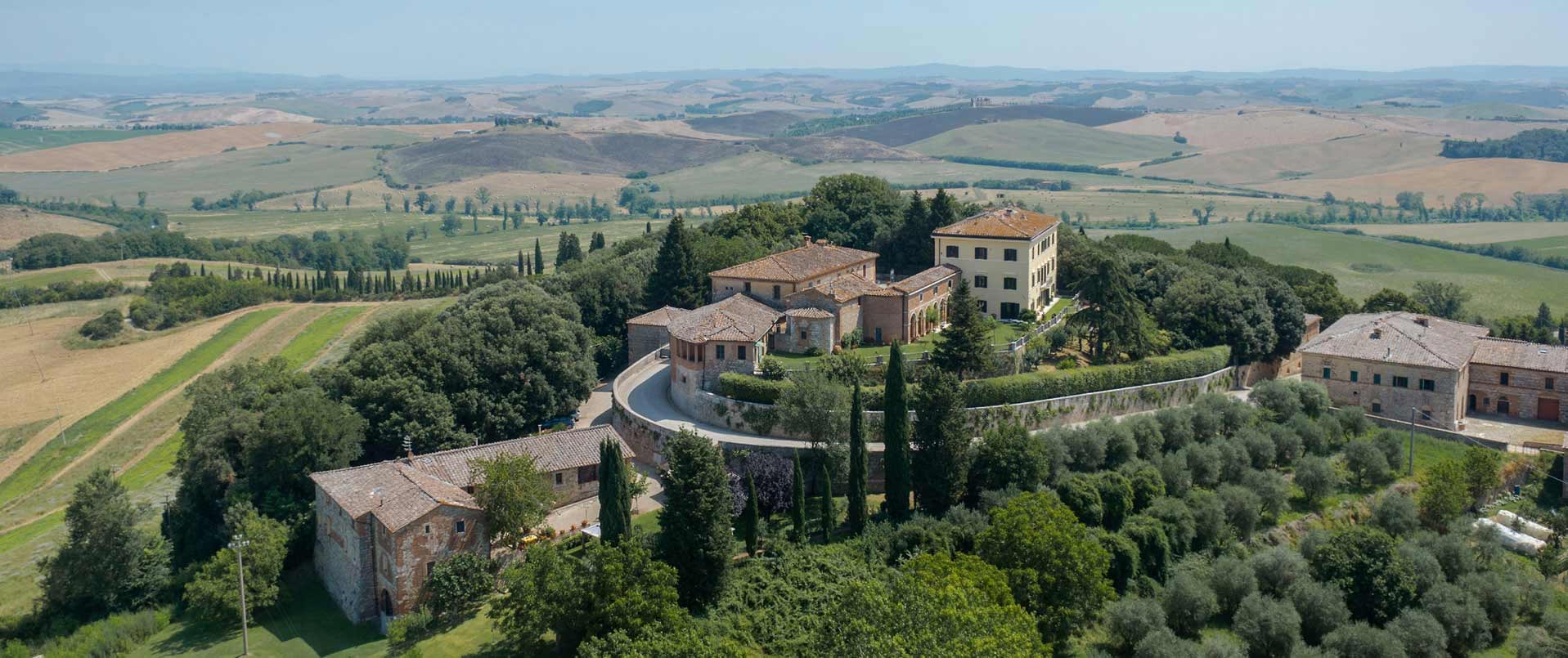
Villa Muti Bussi features an exquisite Garden Gallery, connected by an impressive staircase to the main ‘piano nobile’ floor Gallery, Dining Room and Salottino.
It is possible to conduct a wedding ceremony in the private chapel, which overlooks a park stretching over one hectare. The park includes a pine forest, an Italian-style garden and two beautiful avenues connected by a bridge that provides an exclusive view of the Villa.
The history of Villa Muti Bussi
Originally known as Casino Bussi due to its earlier use for hunting purposes, Villa Bussi in Viterbo was built in its current form by architect Giuseppe Prada in 1737 on the site of an earlier structure, likely dating back to the 1500s, on the estate known as Bel Sasso or Bel Poggio.
Records of the existence of the Bussi family, an old Viterbese lineage, are documented as early as the 13th century. Initially involved in industry and trade, they rapidly became prominent, taking leading roles in local affairs and serving the church as clergy and military leaders.
Over the following centuries, notable figures include the Knights of Malta Papirio and Anton Domenico. The former commanded a papal galley and distinguished himself in battles against pirates between Civitavecchia and Ponza, while Domenico was a heroic defender of Candia and served as the commander of the papal navy.
The Villa is inextricably linked to their memory, as is evidenced by the frescoes in the gallery on the first floor, commissioned by Commendatore Papirio, depicting their noble achievements.
Another notable Bussi, Pier Francesco, also known as Giovanni Battista, was appointed Cardinal by Benedict XIV in 1759, and was responsible for the late Baroque chapel in the Villa, located on the right side of the ground floor.
Facilities and services at Villa Muti Bussi
The villa is available for receptions, conferences, corporate events and film shoots.
 Film sets
Film sets
 Private events
Private events
 Spirituality
Spirituality
 Weddings
Weddings